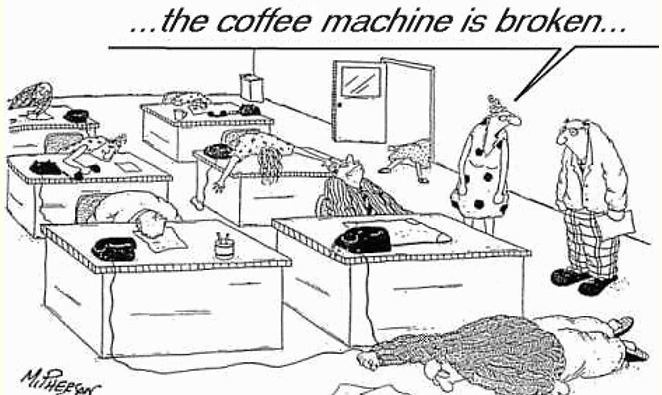
Coffee is in high demand due to its association with productivity, alertness, socializing and overall happiness.
When was the last time you went out for a cup of Joe? Whether it’s black, half and half, or decaf, most people would agree that coffee is an important part of their daily routines. Studies show that coffee is the most commonly consumed beverage in Canada next to tap water. Starbucks is one of the most successful coffee companies, having had 45 years in operation and over 5500 locations in over 50 countries. How does a company like Starbucks achieve success in such a competitive industry?
Another student blog post outlines one way that Starbucks creates value for its customers, using ethically sourced products. By being socially responsible, Starbucks effectively differentiates itself from companies that do not use ethical means of production, and complements society’s growing awareness of the need for companies to address ethical issues.

Starbucks drinks are highly customizable, allowing customers to personalize drinks with syrups, shots, toppings, and more.
The strategy that Starbucks uses is a combination of competitive advantage (Porter 1996) and transient advantage (McGrath 2013). First, Starbucks employs a differentiation strategy in order to create a unique value for its customers and gain a competitive advantage. Starbucks achieves differentiation through its large selection of products, including drinks, food, reusable mugs, snacks and packaged coffee. Starbucks drinks are also highly customizable, allowing customers to add sweeteners, shots, syrups, toppings and milks. This creates a personalized experience for Starbucks customers. Starbucks also has its own unique sizes: instead of the conventional small, medium and large, customers order tall, grande or venti. This adds to the differentiation and luxury associated with Starbucks’ brand. This sense of luxury is reinforced by Starbucks’ rewards program and its exclusive gold membership.
Starbucks also makes changes to its company as external opportunities and threats arise, employing a strategy of transient advantage. One tool that makes Starbucks unique is its rewards program. Members earn “stars” on every dollar spent, which can be redeemed for a free drink. Starbucks offers members “bonus stars” for purchasing certain items, encouraging customers to try newly introduced products. “Bonus stars” are also offered for filling out surveys, allowing Starbucks to get regular feedback on how they are doing, and how they can improve in order to add value for their most loyal customers. Starbucks has proven to be especially innovative with the rise of technology and smartphone use, recently creating an app where customers can conveniently order ahead and pay on the app.
Through the use of the differentiation and transient advantage strategies, Starbucks is able to achieve a sense of luxury and personal connection with its customers. By making its brand unique and evolving its company to fit new opportunities, Starbucks has successfully made itself into one of the strongest companies in the world.
Word count: 438
References:
Coffee Facts. (2015). Retrieved October 03, 2016, from http://www.coffeeassoc.com/media-coffee-facts/
Dayton, Z. (n.d.). Before and After Work Drink Coffee Funny Quotes and Sayings. Retrieved October 03, 2016, from http://quotesgram.com/img/before-and-after-work-drink-coffee-funny-quotes-and-sayings/2670901/
Grosz, C. (n.d.). Coffee Order Cartoons and Comics. Retrieved October 03, 2016, from https://www.cartoonstock.com/directory/c/coffee_order.asp
International Stores. (2016). Retrieved October 03, 2016, from http://www.starbucks.ca/business/international-stores
McGrath, R.G. (2013). Transient Advantage. Harvard Business Review, 91(6), 62-70.
Porter, M.E. (1996). What is Strategy?. Harvard Business Review, 74(6), 61-78.
Quinn, M. (2016, September 12). Starbucks Sustainability and Stakeholder Theory. Retrieved October 02, 2016, from https://blogs.ubc.ca/michaelaquinn/2016/09/12/starbucks-sustainability-and-the-stakeholder-theory/